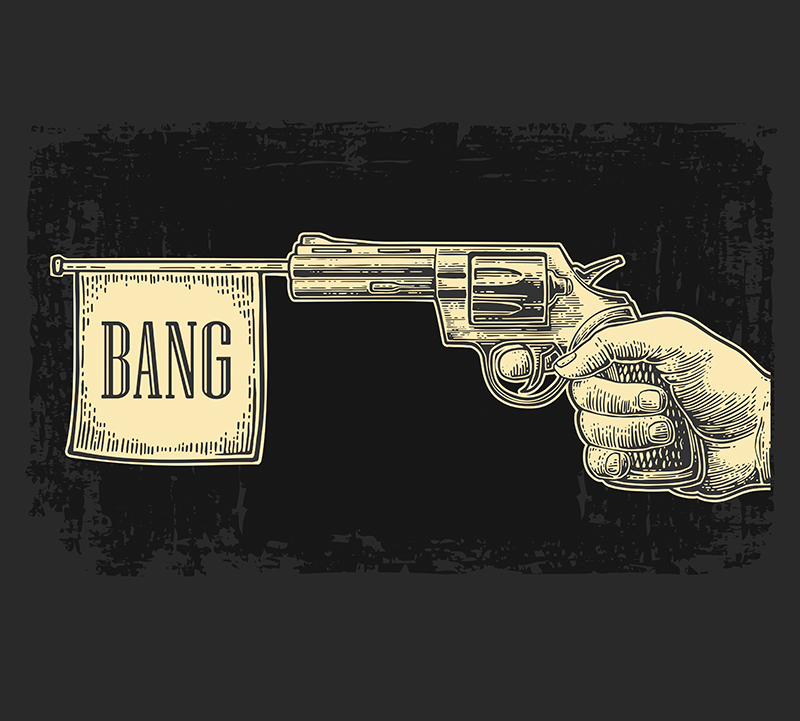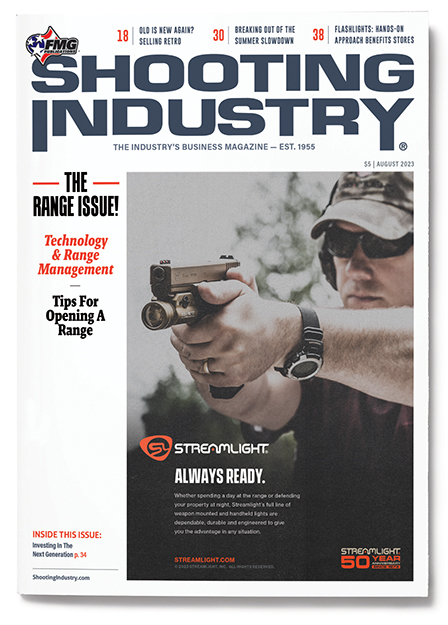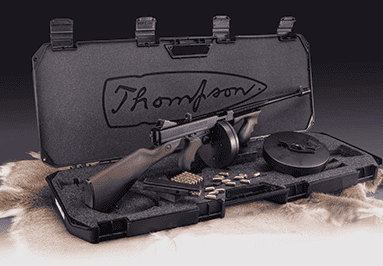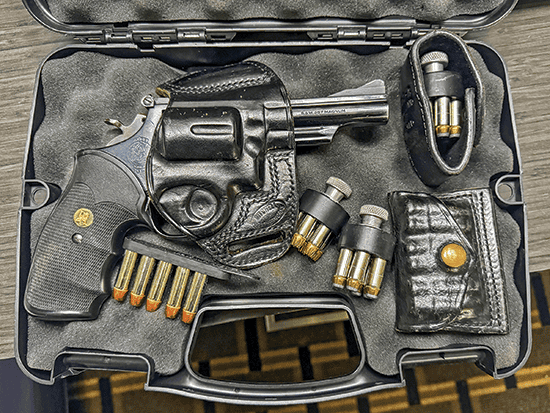Selling Retro
Many gun shops today have little but black rifles and black polymer pistols on display. They’re missing some sales. There’s a reason so many other gun shops have older-style firearms in stock … and keep selling them.
Consider the Henry brand. A Henry Big Boy .357 Magnum revolver sits on the file cabinet next to my desk as I write this. Purist collectors of 20th century Colts and Smith & Wessons may see it as a parody of their favorites; something a cartoonist might draw in the hand of Yosemite Sam. I dunno about that.
The rear of the Big Boy’s frame harkens to double-action Colts of the late 1870s, while the front reminds me of the fixed-sight Mark III Colts of about a century later, the Metropolitan .38 Special and the Lawman .357 Magnum. The brass trigger guard and grip frame take you back to the cap-and-ball days.
The thing of it is, this first revolver from Henry is remarkably well made: great build quality, excellent finish. It takes an HKS speedloader for an L-Frame six-shot S&W, and the very nice-looking — and feeling — walnut stocks have been shaped to allow speedloading. Remember when we had to “hog out” the left stock panel of the target-type Colts and Smiths to get a speedloader past them? Someone at Henry put good thought and research into this design.
Take a look at the Henry catalog. Almost everything is a new take on an old design. The AR-7 takedown .22 rifle is the truest thing to the original design, in this case from Armalite. It was unique and “catchy” when it first came out, and it still is. The Original Henry line is reasonably close to the original namesake, too, and their single-barrel break-open shotguns remind me of my first firearm of my own as a little boy, an Eastern Arms brand.
Through the rest of the product line, you see Henry doing more of its own take on the older design: more ergonomic lever loops, for example. The little octagonal barrel .22 pump gun brings me back to when I was a kid, and those external-hammer Winchester pump guns chained to a bench were found in “shooting galleries” all over the country.
Intangibles
One thing you’re selling with such firearms is nostalgia. Particularly for those of us who grew up in households with guns, they remind us of good times passed.
I haven’t been bird hunting in a long time, but if I was to go afield for fowl tomorrow, I’d be inclined to leave my more efficient modern scatterguns in the safe and take a side-by-side double-barrel like my father carried when I first accompanied him into the field. I might even take his ancient Lefever I inherited. And if it had been left to someone else, well, I might just go to your gun shop to buy one reasonably close to it.
Yes, nostalgia is “a thing” — as they say today.
Another thing you sometimes need to sell is simplicity. Let’s look at the opposite end of the gun-buyer bell curve: all those millions of non-gun-owning people who decided to purchase their first firearm sometime between 2020 and now.
Being a bit leery of this whole gun thing, they tend to look for something uncomplicated and foolproof. The coach gun, the short and handy double-barrel shotgun, is the essence of simplicity. Press a lever sideways and break it open.
(Sales tip: Sell the hammerless style with its easy-to-operate thumb safety, not the older dog-ear hammer style! Cocking the latter can be awkward and de-cocking them can be much more so, particularly for those unfamiliar with the design or with weak hands.)
Now, I personally don’t care for a two-shot firearm as a home-defense weapon. That said, however, I remember visiting the late, great combat shooting expert Jeff Cooper at his home, The Sconce. He showed me the double-barrel coach gun he kept handy to, as he put it, “repel boarders.” Who am I to argue with Jeff Cooper?
And of course, some of your new gun buyers may have taken Joe Biden’s suggestion to use a double-barrel shotgun for home defense. (Such a buyer should be reminded Biden’s advice to fire buckshot into the air or through the front door can result, and has resulted, in tragedy.)
The same simplicity is found in the double-action revolver with swing-out cylinder. Wheelguns now occupy a shrinking space in handgun display cases, and in law enforcement have pretty much been transferred from the police armory to the police museum. For all of it, though, your new buyer appreciates the “easy to check if it’s loaded or not” element.
“One thing you’re selling with such firearms is nostalgia. For those of us who grew up in households with guns, they remind us of good times passed.”
The Revolver As “Retro”
Speaking of wheelguns, if you’re in the gun business, you’ve witnessed the comeback of the Colt Python. Originally introduced in 1955, discontinued after half a century or so, it was reintroduced to resounding retail success in 2020. Let’s look at why.
The Python had earned a mystique: extreme accuracy, and Rolls-Royce-level hand-built quality. As soon as they were discontinued, prices for existing samples skyrocketed. A near-new original Python was probably going to sell in the $3,000 range, and for way more than that if it had the super-rare 3″ barrel.
The 2020 Python looked a little different than the original to the most discerning eye, and felt different too: heavier single-action pull, but sweeter single-stage double action. It sold for $1,500 brand-spanking-new. People who had wanted a Python could now finally afford one. When they offered a 3″ barrel version for the same price in 2022, well, it was icing on the cake.
Around the country, the firearms training community is seeing a small but distinct resurgence in double-action revolvers. We’ve talked about nostalgia and simplicity driving retro firearms sales: Here we have something different, the simple pleasure of operating the machine.
We all know drivers who would rather have a four-on-the-floor than an automatic transmission, even though they may have to special order a vehicle with that feature these days. Ask them why, and they’ll tell you something like, “It’s because I want to be driving the car, not having the car drive itself for me.”
Running a double-action revolver is much the same. The autoloading firearm is named so because with each shot it reloads its own chamber, but rolling the trigger of a double-action revolver lets the shooter know he is bringing that next cartridge in the next chamber up into line with the barrel.
And it’s the same with the lever-action rifle or the pump gun: A subtle sense of more direct personal control, of mastery of the machine. It’s subtle. You can see why I call it “an intangible.” But it’s there, and it sells those types of firearm for you.
We have only to witness the eagerness with which the return of the Ruger Marlin lever-action rifles has been greeted by the gun-buying public. And to finish this column where it began, we see it in the popularity of the entire Henry Firearms line.
“Retro” may not be your biggest seller … but it still sells.






